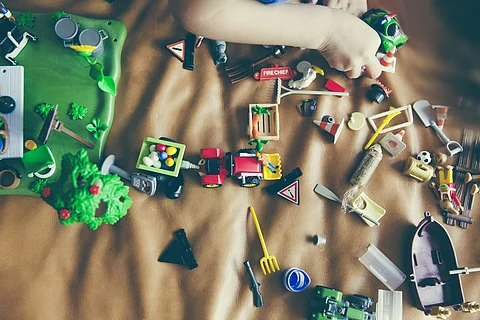

NEW DELHI: There is presence of highly toxic flame retardants chemicals in children’s toys and related products made from recycled plastics generated from e-waste, said a global study.
According to the study, chemical contaminants that can damage the nervous system and reduce intellectual capacity were found in Rubik’s Cubes – a puzzle toy usually made of recycled plastic, designed to exercise the mind.
Surprisingly, some of the toxic chemical levels in children’s products in this study exceeded proposed hazardous waste limits.
The global survey of products from 26 countries, including India, found that 90 percent of the samples contained toxic substances. Nearly half of them (43 percent) contained hexabromocyclododecane (HBCD), globally banned by the Stockholm Convention.
In the study, six samples from India were analysed and found that four samples has elevated concentrations of toxic chemicals. These chemicals are persistent in the environment and known to harm the reproductive system and disrupt hormone systems, adversely impacting intelligence, attention, learning and memory.
“These toxic chemicals should not be present in children’s toys. The problem needs to be addressed immediately,” said Satish Sinha, Associate Director of Toxics Link.
This comes few days before the global Conference of the Parties to the Stockholm Convention. It will decide whether to continue allowing the recycling of materials containing globally banned by Stockholm Convention.
“Recycling materials that contain toxic chemicals contaminates new products, continues exposure, and undermines the credibility of recycling,” said Joe DiGangi, Senior Science and Technical Advisor, IPEN.
Another critical decision of the Stockholm Convention Conference will be to establish hazardous waste limits. Protective hazardous waste limits would make wastes subject to the treaty’s obligations for destruction – and not permit their recycling.